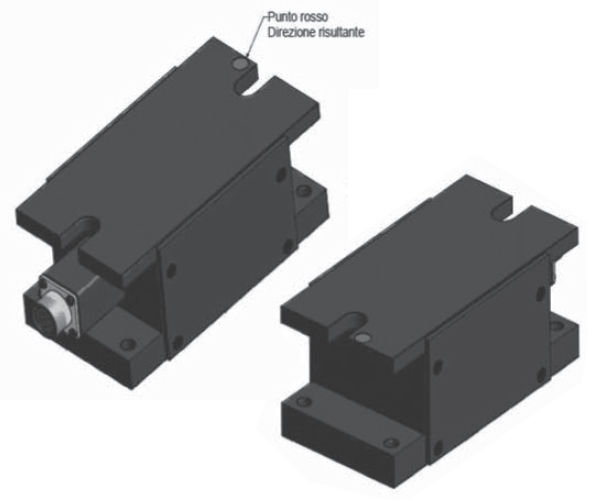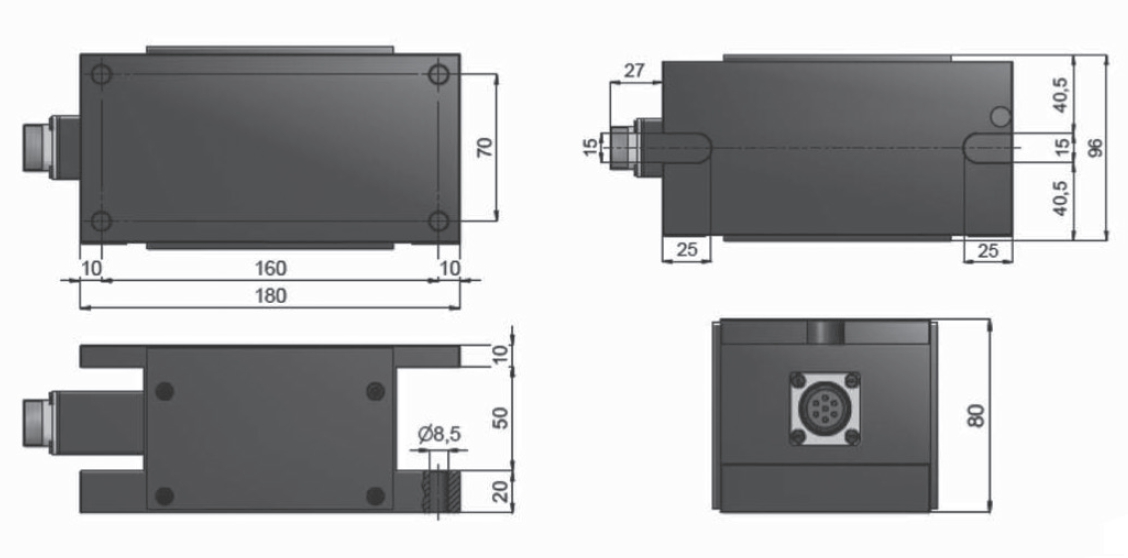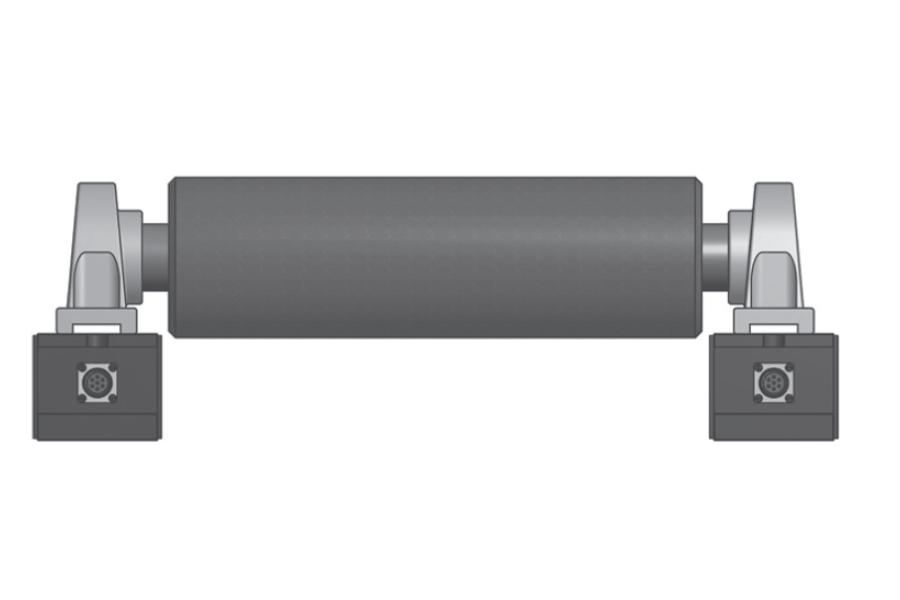ROLL LOAD CELL
Features: Load cell for straight supports. Insensitive to stresses in 2 axes excluding the measurement one. Protection against overloads.
Applications: for the measure of tension tapes, tessil, paper, nylon, rubber, metallic laminated, hide, flexographic printing presses etc.
![]() Click to enlarge image
Click to enlarge image




| Material | Aluminum / Steel |
| Nominal load | 250, 500, 750, 1000, 2000, 2500 N |
| Limit load | 200 % F.S. |
| Breaking load | 500 % F.S. |
| Nominal load deflection | 0,10 mm |
| Supply voltage | Maximum 18 V dc |
| Sensitivity | 1 mV/V |
| Output tollerance | 0,1 % F.S. |
| Zero tollerance | 1 % F.S. |
| Linearity | 0,1 % F.S. |
| Hysteresis | 0,03 % F.S. |
| Reapeatability | 0,1 % F.S. |
| Input resistance | 350-360 ohm |
| Output resistance | 350-353 ohm |
| Insulation resistance | >= 2000 Mohm |
| Creep (30 Minutes) | 0,03 % F.S. |
| Thermal compensation | -10 / +40°C (14 / +104°F) |
| Operating temperature | -20 / +70°C (-4 / +158°F) |
| Temperature deviation zero | 0,003 % F.S. / °C |
| Temperature deviation full scale | 0,002 % F.S. / °C |
| Protection class | IP 54 |
| Connection | Panel male connector UTS08E4P |
| Standard cable length | Loose female connector UTS6JC8E4S, connection cable 4 x 0,25 (length to be defined) |
| Type | CONNECTOR MIL 4P IT3106A-14S |
| Length | 5 - 10 m (body lead cell not connected shield) |
| Pin A | - IN |
| Pin B | - OUT |
| Pin C | + OUT |
| Pin D | + IN |
| Optional | CONNECTOR 4P 4-20 mA S154 |
| Length | 5 - 10 m (body lead cell not connected shield) |
| Pin A | 4 mA |
| Pin C | 20 mA |
General precautions to be followed in the installation and assembly of load cells: